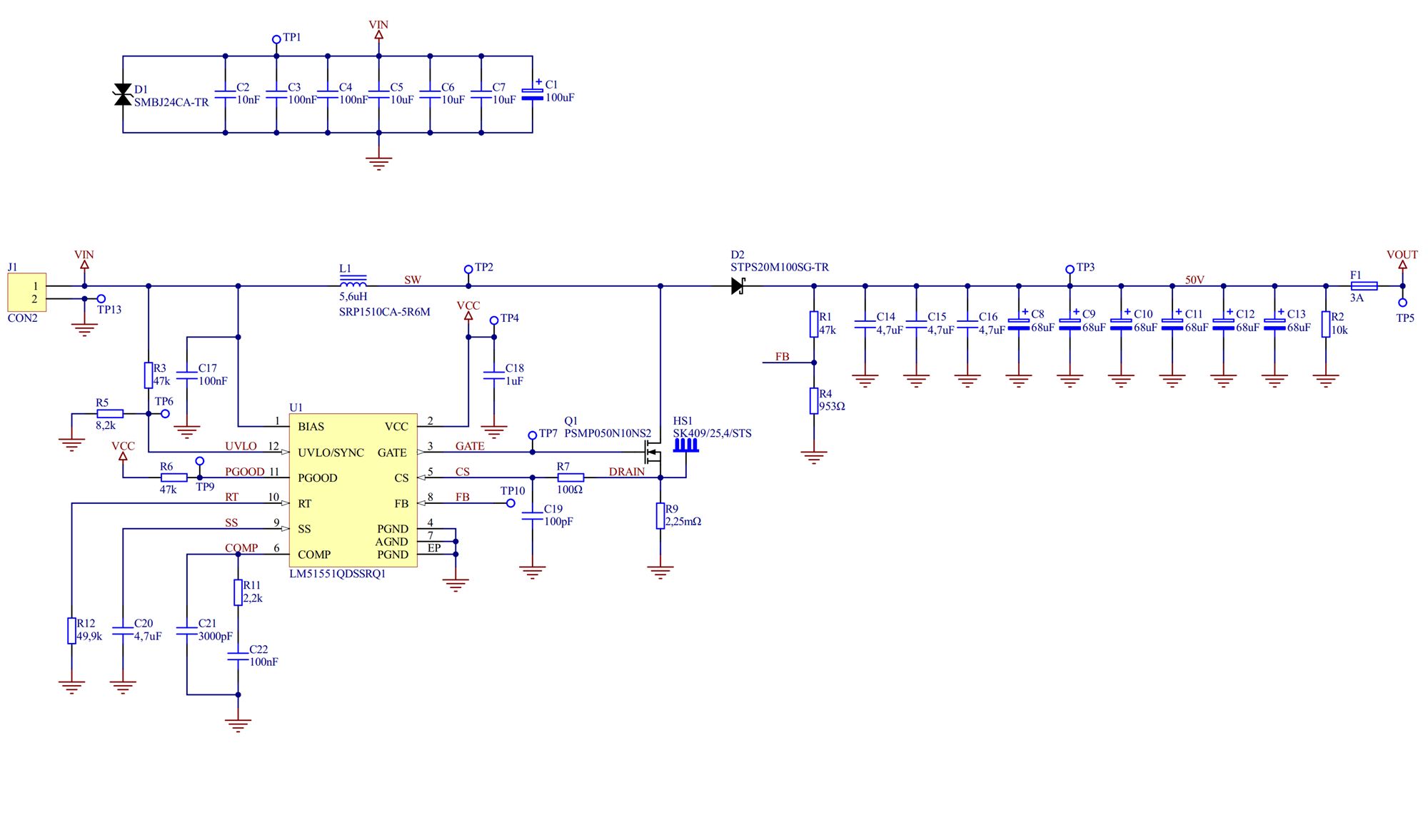Other Parts Discussed in Thread: LM5155, LM5121
Hi,
I am designing a 200W boost converter from 12/24V to 50V. Most of the time, the converter will operate around 60W, but sometimes it will need to provide 150-170W for several minutes. I have designed a PCB with LM51551-Q1 (P/N: LM51551QDSSRQ1), schematics attached. I've used both Webench and PSpice for TI for the simulations, both showing perfect startup with 12.5, 25 and 50 Ohm loads. I've also used LM5155 Boost Controller Design Tool spreadsheet.

During testing I experienced several problems with startup on 12V - I managed to fix it by changing soft-start capacitor (C20) to 4,7uF. The converter operates smoothly with 50 Ohm load, however when I attach another 50 Ohm resistor in parallel (creating 25 Ohm resistor) PGOOD goes low and the converter stops working - it look like it detects overcurrent, however I am quite far away from the designed current limits. Is anyone able to help me?
Greetings,
Bart

